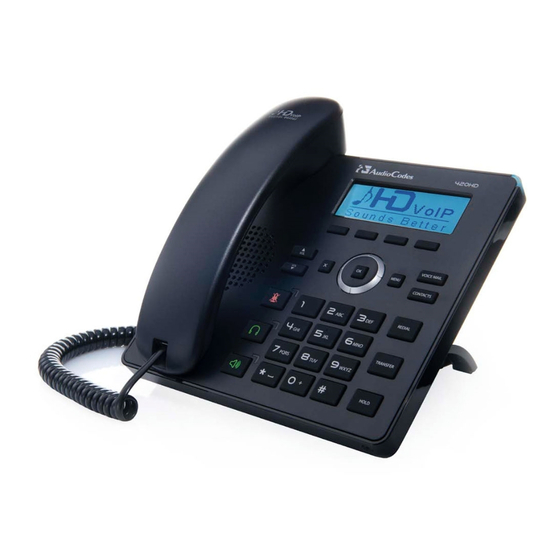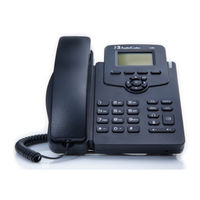
AudioCodes 405HD Manuals
Manuals and User Guides for AudioCodes 405HD. We have 8 AudioCodes 405HD manuals available for free PDF download: Administrator's Manual, User Manual, Quick Manual, Quick Reference Manual
AudioCodes 405HD Administrator's Manual (242 pages)
High Definition IP Phones Series
Brand: AudioCodes
|
Category: IP Phone
|
Size: 4.16 MB
Table of Contents
Advertisement
AudioCodes 405HD Administrator's Manual (232 pages)
400HD Series IP Phones for Microsoft Skype for Business
Brand: AudioCodes
|
Category: IP Phone
|
Size: 7.59 MB
Table of Contents
AudioCodes 405HD User Manual (102 pages)
IP Phone for Microsoft Skype for Business
Brand: AudioCodes
|
Category: IP Phone
|
Size: 3.09 MB
Table of Contents
Advertisement
AudioCodes 405HD Administrator's Manual (84 pages)
400HD Series
IP Phone Manager Pro
Brand: AudioCodes
|
Category: IP Phone
|
Size: 4.49 MB
Table of Contents
AudioCodes 405HD User Manual (74 pages)
VoIP, 400 IP Phone Series
Brand: AudioCodes
|
Category: IP Phone
|
Size: 1.29 MB
Table of Contents
AudioCodes 405HD Quick Reference Manual (2 pages)
Brand: AudioCodes
|
Category: IP Phone
|
Size: 0.21 MB
Table of Contents
AudioCodes 405HD Quick Manual (5 pages)
Brand: AudioCodes
|
Category: IP Phone
|
Size: 0.4 MB
AudioCodes 405HD Quick Manual (4 pages)
GbE IP Phone
Brand: AudioCodes
|
Category: IP Phone
|
Size: 0.46 MB







